Given that an employee intranet encompasses the entire organization in one shape or another, it’s important to prioritize the development of the intranet scope to deliver an amazing employee intranet that works for all departments!
SharePoint Migration Plan: Key Strategies and Lessons Learned
Since Microsoft’s announcement of SharePoint 2019, many organizations are moving to SharePoint 2016, SharePoint Online, or Hybrid. Here are the most common approaches and strategies we’ve used to help our clients migrate to a new SharePoint environment.
Lift-and-Shift
Often companies choose a lift-and-shift approach, where the solution is moved to a newer version of SharePoint with no functional changes. This approach is cost-effective especially if your previous solution has not been heavily customized, and you just want to take advantage of all the new features available. Lift-and-shift can also be selected as a “phase one” migration, followed by functional enhancements in later phases.
Although this is a relatively straightforward path, here are the key tactics we found crucial with many customers over the years.
Do a trial run / Have a Pre-Production environment
As your SharePoint environment goes through updates, it’s hard to keep track of everything. Small customizations are often implemented by Power Users directly on the page via script. Sometimes it’s a piece of JavaScript, or a workflow built using SharePoint Designer. Those may not easily translate to a newer version of SharePoint and that’s why we recommend doing a trial run on a development environment using DB attach process.
Once you have run the migration, you can involve your key users with a smoke test of their specific areas. This brings us to the next point of having a RACI matrix to know who does what.
Have a RACI
It’s an all-familiar [Responsible/Accountable/Consulted and Informed] matrix. and is an important part of the SharePoint Migration Plan. Here is why we need it:
To identify who will be doing the smoke test of trial migration and catching any issues on key pages (landing, key areas, and department pages etc
Know who to contact when things need to be fixed or content retired
Understand who makes go/ no-go decision, and understands all aspects of the solution
Identify stakeholders to prioritize issues before migration to production
Know who will send communication to which users at various stages of the migration
Know who will support users who are unfamiliar with some new UI present on their pages
Identify staff and contractors supporting outages after hours or on a day 1 after the migration
Identify who will track task completion, or who's your project manager
Prioritize Issues
To some people, an issue may not be an issue, and sometimes that’s a big issue :)
With the help of RACI you can determine key stakeholders who can help you drive what’s to be addressed right away or after Go-Live. If there are items on which your team can’t agree, use your Go /No-Go meeting to decide with [Accountable] stakeholders.
Keep track of the decisions for each issue discovered and what resolution should be. It will help you see what was done as you migrate from the development environment to staging and finally to production.
Track Action Items
Sharepoint migrations strictly rely on the correct sequencing of events because they involve switching users from one production system to a new system.
If someone doesn’t complete their task or completes it partially, it’s likely to have a bearing on the next steps in the sequence. For example, if you decide not to set automatic link redirect to a new system, be sure to send an email communication about that as it may impact some users.
We recommend using Trello or Microsoft Planner to track activities and checklists and move them from one bucket to another as they change their state.
Prepare Communication
Having adequate communication sent to users will set their expectations and significantly increase customer satisfaction. As a bonus, your users will feel that you care about their experience.
Depending on the size of your organization, you may want to message things via email, staff meetings or other methods. Chose the method so that no one misses your planned outage window.
Raise awareness of the upcoming change by sending initial communication first, in advance of the migration and more details closer to the migration.
Don’t forget the details:
What will happen (outage, system unavailability etc)
When will it happen (and for how long!)
What to expect after (redirect on some page, new login, new UI etc)
Who to contact if they have a problem (chose method which can handle larger than normal traffic)
Have a Go /No-Go Strategy
Schedule Go /No-Go decision early on to ensure everyone at the table is the right decision maker. It’s important to consider not just technical readiness but also change impact. Short notice change may introduce risk of wider outage so it’s key to chose your options wisely with the right people at the table.
Prepare to handle outages
Continuous testing helps but outages always happen.
This might sound obvious, but have technical resources allocated to work over the weekend or evenings surrounding the migration milestones. Even if you won’t need their help, it’s good to have a backup. It might be permission access to a file-share or incorrect login credentials that will stall entire migration. Same goes for users who will perform smoke test of the migrated system. Having the right people available at the right time is crucial.
We recommend developers and admins clear part of their day the morning following a successful migration to help address anything urgent as users report problems.
In summary
Technical aspects of a lift and shift migration are as important as change management parts of the process. Feel free to adapt some of the tactics above to your organization based on the size and culture. In many cases, you’ll be glad you clarified assumptions and avoided set-backs.
Leave your comments on what are some of the things you're curious about and we'll try to get an expert insight on the topic
Yaroslav Pentsarskyy is the Director of Product at Origami. He's also 8 time Microsoft MVP, speaker at many local and worldwide tech events, and a published author of several SharePoint related books.
"Building internal user community of over 100K users, here's what we found"
Recently, I had a pleasure to stop and have a chat with Joe Francis from GSK and Lesley Crook from Perspicuity. They've been able to share something that you can't find out just by reading a book. They've successfully created and continue to manage huge network of over 100K of internal Yammer users. Naturally, the topic caught my attention since many organizations struggle to manage much smaller internal networks.
Here are some of the most valuable bits of our conversation, for more check out the full video
[Yaroslav Pentsarskyy]
How did you come across Yammer as a tool? Did you have to "sell" it?
[Joe Francis]
It was actually an eight-year journey for GlaxoSmithKline - to get to where we are now. Yammer started originally as a disruptive computing experiment. We had students and interns that were challenged to come up with a new way of collaborating and working together and they fell upon Yammer and from those humble beginnings is how we started. Initially we worked through a lot of viral growth and then there was a lot of uptake. IT decided look at this as something that is going to work and decided to put some effort behind it. We partnered with our with our friends in communications and began making it a real thing.
[Yaroslav Pentsarskyy]
Was there a resistance to this new tool and how did you overcome it?
[Joe Francis]
There are absolutely those that get it a 100% and it doesn't matter what part of the organization they are. There are definitely those who don't and have to be
convinced. There's definitely a paradigm: the green dots, the yellow dots, and the red dots. The red dots being the ones that are hardest to convince, the green dots get it automatically and the yellows can be convinced. The challenge is to get those yellows over to green and once you're there, come back and work on the reds and we definitely had to do a bit of that.
[Yaroslav Pentsarskyy]
What are some of the top tips turning those yellows into greens and those red ones into yellows?
[Joe Francis]
It's really all about finding a bit of business fit justification. Putting it out there is not going to
bring most people in, so if you can find out what the pain points are within a group or an organization it helps.
[Leslie Crook]
Doing a yam jam campaign around certain event is one of the ways [...] it's a 24 hour activity on the network in a probably a specific group where you gather together subject matter experts from the company [for example] people from the analyst team in finance, social media, corporate communications.
[Joe Francis]
Another example, for leaders, is to wrap it around a big event like senior leader conference bring it in naturally as part of what are the problems we're trying to solve and how can we support this conference how can we go out to employees whilst we're still at the conference get their opinion about what we're talking about at this conference and then bring it back. It's important to use a hashtag around the event for people to immediately recognize it.
[Yaroslav Pentsarskyy]
Can a network like this run on autopilot once set up or do you need someone to constantly keep the fire going?
[Joe Francis]
It can run on autopilot short period of time, but in reality you're only gonna have success if you've got somebody drive it. Whether it's a group or a division or an individual or different company that are helping out. You really have to figure out ways to keep those topics
that are being discussed, keep them live, keep them active and that takes just going out and actively liking post or putting in provocative responses to try to draw people in. Without the engagement it doesn't work so just having it there it can be it can work but it's not really successful.
[Leslie Crook]
Model that I use called six Yammer hats which is based on Edward de Bono's six thinking
hats, describes skills of champions or community managers in a social network, so those are:
"Detective" where you might work in a private group. You might be a surveyor where you're doing polls and asking questions right across the enterprise getting a temperature check
"Astronaut" where you're more of a community manager but you're connecting, sharing, solving and innovating which is Simon Terry MPVs model that I'm quoting there
"Fedora hat" you could be working in communications where you're looking for you
you're on the network but kind of in the background and you're picking up grassroots stories that might be coming from manufacturing or from the labs in R&D and bringing those stories that have been bubbling away back to corporate comms to the editorial team to make proper intranet SharePoint stories
"Tiara" for giving praise. One "like" by a leader is priceless
"Baseball cap" is all about having fun with a purpose and there were many groups that. Example: group around the cycling, group for sustainable transport, photography, pets, baking so it's it's having fun at work
[Yaroslav Pentsarskyy]
Did you feel like you have to do a lot of governance planning?
[Joe Francis]
You'll fail if you don't. One of the biggest things to make you more successful is ensuring that you've got legal, security and risk groups on board with you. They're gonna want to know: are there ways to monitor the content and are we protecting ourselves, are we making sure we don't have data leaks. Having support from the legal team is crucial. You need to have that written as a policy that everybody accepts when they go in and there's general awareness this is how you act.
Leave your comments on what are some of the things you're curious about and we'll try to get an expert insight on the topic
Yaroslav Pentsarskyy is the Director of Product at Origami. He's also 8 time Microsoft MVP, speaker at many local and worldwide tech events, and a published author of several SharePoint related books.
Your next document management system is going to be perfect!
First, let me give you a scenario:
You have 30 documents in a folder. You need to find a document with an “agreement” as part of its name. Would you use search or look through file names?
Hold that answer!
Here is a scenario 2. You have 30,000 documents and you need to find the one with the word “agreement” in it. Would you still look through file names manually?
Wait, how did I know you’re going to chose “manual answer” for the first scenario?
In one of my projects we tested user’s behavior in a similar sort of way as you did just now. Instead of files, they needed to find case records. We found that users resort to more structured approach when the amount of information they must deal with appears to be manageable. They prefer to look through views, names on a record, file creation date etc.
In contrast, when there is too much to go through, it becomes data. Data is best parsed by our unconscious intuition because our brain relies on finding patters since it understands that there is no match analyzing all the data consciously.
According to this an autonomous driving car processes 100GB of data each second – that's what your brain does and you don’t even bother!
Now, back to designing your document management system. How much data are you presenting to your users? Are you providing tools to help users find what’s in front of them?
Many organizations rely on search to help users find documents, but do nothing to improve it. Is your search contextual? Is content being searched for specific enough? What about draft content or duplicate sources? What about old and irrelevant content?
Here are few approaches to designing better document management systems:
1. Turn data into information as early as possible. It’s easy to create a document library and drop forms in Excel format into the library, but now the data in those Excel sheets is not readily available until someone opens the file.
Perhaps a better solution is to offer users enter the data in a structured way using a list, CRM system, or an app.
Now that data is safe but you can also report on it, draw pretty graphs, search with variety of filters and tools. I’m not suggesting you should convert every document into a list or an app. Simply identify those high traffic, high value types and automate them. The effort you’ll spend will pay off each time your users interact with the structured data.
2. Retire obsolete content. Why, you ask? Isn’t storage cheap? Yes, the storage is cheap but not the time your users are going to spend looking for something useful in a whole pile of not so useful, old content.
You don’t have to delete things right away. With SharePoint you can set expiration workflows which will automatically archive and eventually delete content passed their set expiration. You can even have SharePoint send you a report of expired content before you decide on what to do with it. So if those are business expense receipts you’re keeping for the 10th year – it’s time for them to go.
3. Know your user’s workflow and design the system accordingly. Does your user’s day start with working on documents from yesterday or last month? Perhaps create views to help them see most recently accessed or worked on documents. Perhaps you need a “manager view” to separate some features used mainly by managers and not overburden the interface with too many filters and buttons.
If part of the workflow is for your users to fill in a form and attach a document, help them out by putting related functions together. Minimize button clicks, new browser sessions, tabbing and switching. If it doesn’t seem intuitive for you, and you built it, it probably won’t feel intuitive to others.
4. Eliminate useless features. Just because something is cool it doesn’t mean it’s helpful. With constant overload of new features in the product it’s important to only introduce the ones that will help your users. Think what’s usable, intuitive, simple, and easy to find.
Best part of all, most of the tools are there out-of-the-box so there is very little configuration investment involved.
What are your thoughts?
We’re here to help
If you have questions on how to make your intranet more engaging while leveraging your existing Office 365 and SharePoint investment, we’re here to help you make that impact.
Yaroslav Pentsarskyy is the Director of Product at Origami. He's also 8 time Microsoft MVP, speaker at many local and worldwide tech events, and a published author of several SharePoint related books.
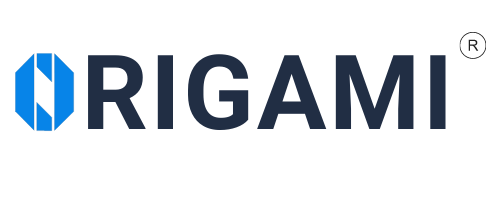
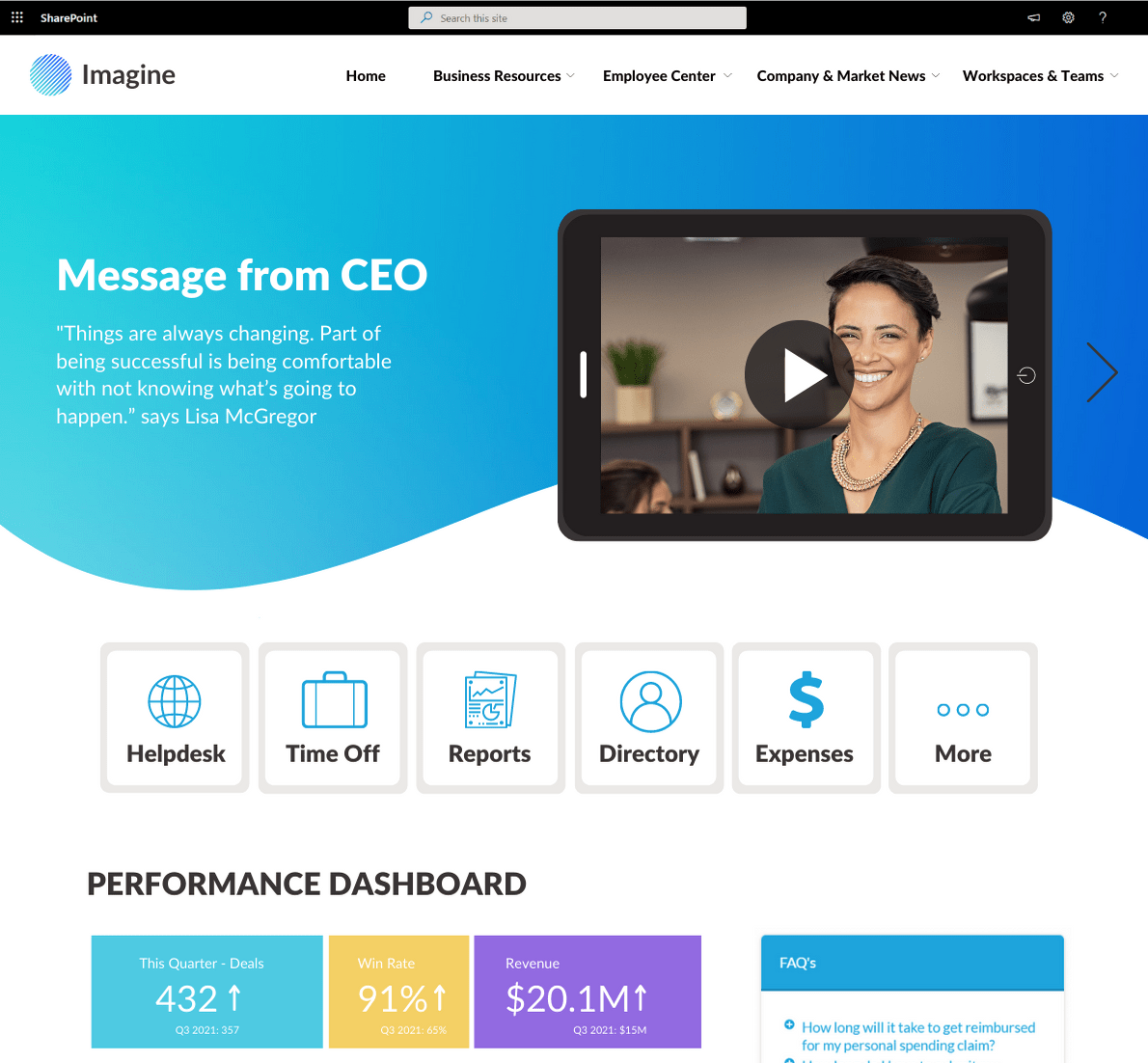



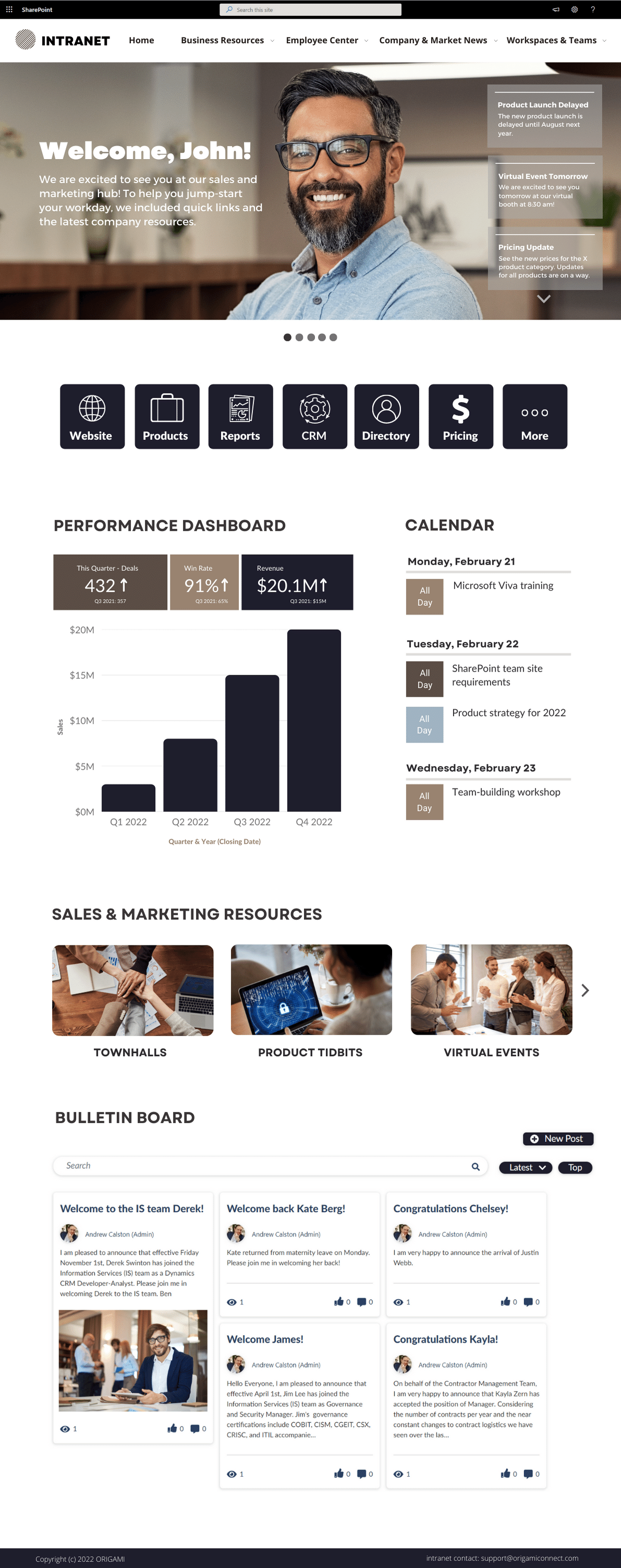




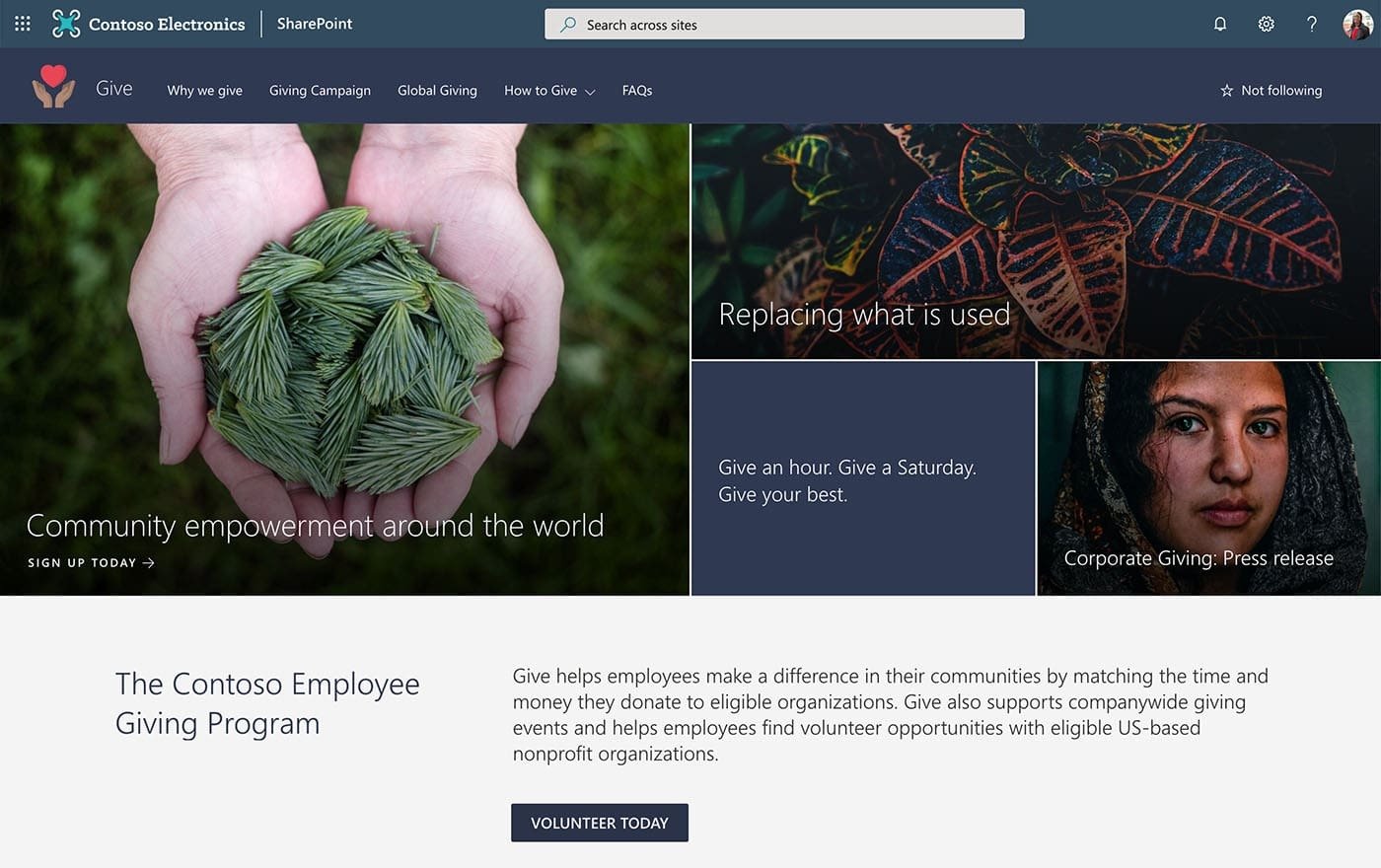
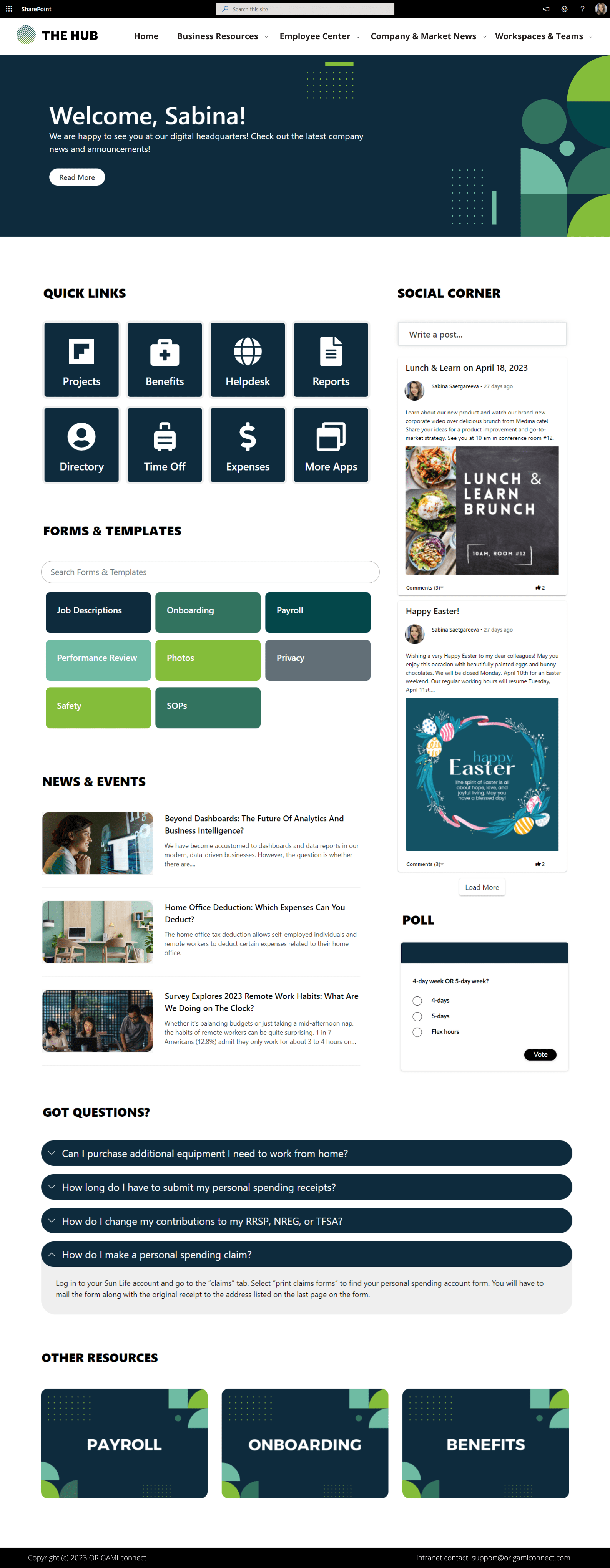













So, how much is it to build a SharePoint intranet?
What’s surprising is that there is barely any information that can help you put together a budget—let’s look at real numbers you can build a business case with.